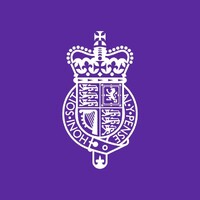Company Cyber Security Posture
NANA
NA Company Details
NA
NA
NA
NA
NA
NA
Scan still pending
NA
NA
Between 200 and 800
This score is AI-generated and less favored by cyber insurers, who prefer the TPRM score.
 NA Global Score
NA Global Score.png)

Company Scoring based on AI Models
| Model Name | Date | Description | Current Score Difference | Score |
|---|---|---|---|---|
| AVERAGE-Industry | 03-12-2025 | This score represents the average cybersecurity rating of companies already scanned within the same industry. It provides a benchmark to compare an individual company's security posture against its industry peers. | N/A | Between 200 and 800 |
Company Cyber Security News & History
| Entity | Type | Severity | Impact | Seen | Url ID | Details | View |
|---|
Company Subsidiaries

NA
Access Data Using Our API

Get company history
.png)
NA Cyber Security News
Raising the roof on cybersecurity for emerging cyber threats in smart cities | IRIS Project | Results in Brief | H2020
New cybersecurity software tools and distributed ecosystem strengthen detection and response of emerging cyber threats, augmenting...
Tallinn Mechanism represents a brave new world of international cyber cooperation
The Tallinn Mechanism is a voluntary group formed in December 2023 to coordinate international assistance aimed at strengthening Ukraine's national cyber ...
Applications for the Cyber Accelerator are open
Cyber accelerator is a 7-month accelerator program for companies operating in the cybersecurity field. Each team selected to the accelerator ...
Cybertech in Estonia: A playbook for the world
A small nation with a little over 1.3 million population, Estonia is being considered as one of the most cyber-resilient nations in the world.
Estonia hosts NATO-led cyber war games, with one eye on Russia
TALLINN, Estonia — Two months after Russia's invasion of Ukraine, the cyberwar that experts feared has yet to materialize.
How a cyber attack transformed Estonia
How, a decade ago, a ground-shaking cyber attack brought Estonia to its knees - and spurred it to rebuild.
How Russian threats in the 2000s turned this country into the go-to expert on cyber defense
When people like the German Chancellor Angela Merkel or the King of Belgium want to learn more about cybersecurity, they go to Estonia.
Urban Resilience: How 8 Cities Are Addressing Global Challenges
This article will highlight the efforts of 8 cities taking the lead on coming up with innovative strategies.
Luxembourg government websites knocked offline in latest cyberattack
Several Luxembourg government websites were targeted in a cyberattack on Friday afternoon, the State Information Technology Centre (CTIE) ...

NA Similar Companies

UK Home Office
At the Home Office, we help to ensure that the country is safe and secure. We’ve been looking after UK citizens since 1782. We are responsible for: - working on the problems caused by illegal drug use - shaping the alcohol strategy, policy and licensing conditions - keeping the United Kingdom safe

Workingfor.be
Workingfor.be is the job platform of the federal administration. Here, you will find a wide variety of jobs in different fields of profession. Every day thousands of our employees help build tomorrow's society. When you choose the federal administration, you choose an employer who embraces you

Rijksoverheid
Op vrijwel alle werkterreinen en functieniveaus biedt de Rijksoverheid leuke en boeiende banen. Vacatures zijn bovendien in heel Nederland te vinden. Waar voor jou precies de mogelijkheden liggen hangt onder andere samen met je vooropleiding. Zowel met een mbo- of hbo-diploma als met een universitai

East Riding of Yorkshire Council
East Riding of Yorkshire Council is a unitary authority which means that all local council services are provided by the same council. This is different to other parts of the country where responsibility is shared between a county council and a local district or borough council. The East Riding is

District Trade and Industries Center
This is a Government Office we Help People to Organise Their Industry work either is it of new factory or of old ones we provide space as well as loans for them they can help ourself by taking schems from our department like tax free scheme pollution certificate visesh panjiyan fa certifa

ISSSTE
INSTITUTO DE SEGURIDAD Y SERVICIOS SOCIALES DE LOS TRABAJADORES DEL ESTADO. ES UN ORGANISMOS PÚBLICO QUE OTORGA SERVICIOS DE SALUD, PENSIONES, VIVIENDA, PRÉSTAMOS, ESTANCIAS INFANTILES, TURISMO, CULTURA, RECREACION, DEPORTE; CUYOS AFILIADOS SON TRABAJADORES DE DEPENDENCIAS GUBERNAMENTALES, CON DERE

Frequently Asked Questions
Explore insights on cybersecurity incidents, risk posture, and Rankiteo's assessments.
NA CyberSecurity History Information
How many cyber incidents has NA faced?
Total Incidents: According to Rankiteo, NA has faced 0 incidents in the past.
What types of cybersecurity incidents have occurred at NA?
Incident Types: The types of cybersecurity incidents that have occurred include .
Additional Questions
What Do We Measure?
















Every week, Rankiteo analyzes billions of signals to give organizations a sharper, faster view of emerging risks. With deeper, more actionable intelligence at their fingertips, security teams can outpace threat actors, respond instantly to Zero-Day attacks, and dramatically shrink their risk exposure window.
These are some of the factors we use to calculate the overall score:
Identify exposed access points, detect misconfigured SSL certificates, and uncover vulnerabilities across the network infrastructure.
Gain visibility into the software components used within an organization to detect vulnerabilities, manage risk, and ensure supply chain security.
Monitor and manage all IT assets and their configurations to ensure accurate, real-time visibility across the company's technology environment.
Leverage real-time insights on active threats, malware campaigns, and emerging vulnerabilities to proactively defend against evolving cyberattacks.




